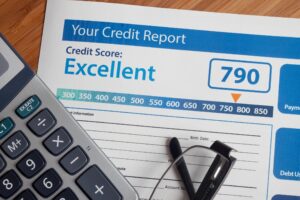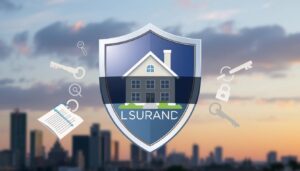**Title: How to Buy a House with Low Income: Loan Options, Tips, and More**
**Introduction**
Wondering if you earn enough to qualify for a mortgage and purchase a home? You arent alone. While home buyers share common challenges when purchasing a home, trying to buy a house with a low income can present even more challenges. Fortunately, borrowers have a variety of loan options and programs available to help make homeownership more attainable for would-be homeowners with lower wages.
Learn everything you need to know about buying a house with low income.
**Can You Buy a House with Low Income?**
Though theres no minimum income requirement for buying a home, it can still be tricky for low- to moderate-income buyers to get approved for a mortgage and purchase a home. Besides meeting loan and lender requirements for credit and debt-to-income ratio (DTI), buying a home involves a lot of costs, such as a mortgage down payment. However, certain loan types or programs can put homeownership within your reach.
**Low Income Home Loans**
Borrowers who may not qualify for traditional home loans can take advantage of specific programs designed to make homeownership more accessible. Lets take a look at some low-income mortgage loans that help borrowers with low incomes or low credit scores buy a home.
**VA Loans**
Department of Veterans Affairs (VA) loans help eligible low-income borrowers buy a house. Because VA loans are guaranteed by the VA, lenders can offer favorable terms such as low or no down payments and lower interest rates to borrowers who struggle to satisfy traditional loan requirements.
**Who Is Eligible?**
VA loans are available to veterans, active-duty service members, National Guard members, and reservists who meet minimum service requirements. Certain surviving spouses may also qualify for a VA loan. VA loans offer a variety of benefits, including lower interest rates, no down payment in most cases, and no mortgage insurance. The loan also has more lenient credit and DTI requirements.
**FHA Loans**
The Federal Housing Administration (FHA) loan is a popular home loan option among available government-backed mortgages.
**Who Is Eligible?**
FHA loans have more lenient requirements that can help low-income borrowers or borrowers with poor credit histories. They have lower credit score requirements, low down payment requirements, and potentially, low closing costs. With an FHA loan, you can make a 3.5% down payment on your home purchase with a 580 credit score.
**ONE+ by O1ne Mortgage®**
ONE+ by O1ne Mortgage allows you to get into a home with 1% down (maximum 3% down) while receiving a 2% grant from O1ne Mortgage. This allows you to get into a home you can afford even if you don’t have tens of thousands suited for a down payment. Here are the basic qualifications:
– 620 qualifying FICO® Score
– Open to those making 80% or less of the median income where they’re looking to buy
– Primary residences only
– Maximum 3% client contribution to down payment
– $350,000 maximum loan amount
This can be combined with our BUY+ partnership with O1ne Homes?. If you use an O1ne Homes Partner Agent, you can receive a lender credit from O1ne Mortgage for up to 1.25% of your loan amount.
**HomeReady and Home Possible Loans**
Fannie Maes HomeReady and Freddie Macs Home Possible are two different conventional loan products. Like government agencies that guarantee government-backed loans, Fannie Mae and Freddie Mac play a similar role with conventional loans (loans that arent backed by government agencies).
Low-income borrowers may find it harder to qualify for standard conventional loans, especially if theyre struggling to save for a down payment. HomeReady and Home Possible loans allow buyers to finance up to 97% of their home purchase. That means borrowers can make 3% down payments.
In addition to these benefits, O1ne Mortgage has a couple of special offers you can choose from. The first is Welcome Home RateBreak, a lender-funded 2-1 temporary interest rate buydown. For the first year you have your loan, your rate is 2% lower than the note rate. The second year, the rate is 1% below the contract rate before adjusting to the permanent rate in year 3.
Alternatively, you can take an upfront credit based on the size of your loan. For loans over $200,000, your credit will equal 1% of the total loan amount up to $3,500. For loans under $200,000, youll receive a $2,000 grant to help with down payment and closing costs.
**Who Is Eligible?**
While there are some differences between the programs, they share similar requirements, including that borrowers make no more than 80% of the median income in their area and take a homeownership education course before purchasing a home.
**USDA Loans**
The United States Department of Agriculture (USDA) runs a loan program that offers mortgages to low- to moderate-income households in rural areas. Its called the Single Family Housing Guaranteed Loan Program. Because the USDA backs the mortgages, lenders can offer 100% financing. That means you wont need to put any money down to buy a home.
Saving for a down payment is a common hurdle for hopeful home buyers, especially buyers with lower incomes. USDA loans can help qualified buyers get into a home they may not have been able to afford otherwise.
**Who Is Eligible?**
You must live in or purchase a home in an eligible rural area, meet credit requirements (typically a 640 credit score and a DTI below 41%) and meet income requirements. To meet income eligibility requirements, your combined household income cant exceed 115% of an areas median household income. Check out the USDA website to verify location eligibility. You may be surprised to learn that many suburban areas are eligible for USDA financing.
At this time, O1ne Mortgage® doesnt offer USDA loans.
**Low-Income Home Buying Programs**
Low-income borrowers can take advantage of specific mortgages geared toward helping them buy a house and home buyer assistance programs that help make homeownership more affordable.
**HUD Homes**
When a home purchased with an FHA mortgage goes into foreclosure, the Department of Housing and Urban Development (HUD) auctions it as a HUD home to try to recoup some of its losses.
**How It Works**
HUD homes are typically sold below market value, making them an attractive option for buyers with less buying power. However, HUD homes are sold as is, which means no repairs will be made before the sale. If you purchase a HUD home that needs lots of repairs and updates, you risk spending more money than if you were to buy a home on the market. If you want a HUD home, get a home inspection and consider whether you can afford any repairs the property may need. You can find HUD homes for sale in your state on the HUD Homestore website.
**Homeownership Voucher Program**
The Housing Choice Voucher program sometimes referred to as Section 8 provides rental assistance to very low-income families. The program also offers the Housing Choice Voucher homeownership program, which allows families to use their vouchers to purchase and own homes.
**How It Works**
Housing voucher programs are administered by local public housing agencies. However, not all local agencies offer the homeownership option as part of their program. If youre interested in using your housing voucher to pursue homeownership, check with your area public housing agency. Youll need to meet the requirements set by your public housing agency, including income requirements. If you arent an older adult or have a disability, you must meet employment requirements. You must also be a first-time home buyer and complete a homeownership counseling program.
**Good Neighbor Next Door**
Good Neighbor Next Door is a HUD program that helps law enforcement officers, teachers, firefighters, and emergency medical technicians purchase a home by offering a 50% discount on the list price of eligible HUD homes in HUD-designated revitalized areas. However, inventory tends to be very limited. At the time of publishing, only a few states had homes available. Browse through listings on the HUD Homestore site to see whats available.
**How It Works**
If you find a home youre interested in, youll need to meet the program’s requirements for your profession and agree to live in the home for at least 3 years.
**State or Local Assistance**
If you could use some assistance buying a home, check out what assistance programs your state or local government offers hopeful homeowners. Local charities or nonprofits may also provide homeownership assistance. Some state or local housing agencies may offer down payment assistance as grants or forgivable loans. You should also look into your states mortgage credit certificate program, which gives lower-income homeowners a tax credit for interest paid on their mortgage.
**Tips for Buying a House with Low Income**
Here are some steps you can take to work toward your homeownership goals:
**Work on Your Credit Score**
A good or excellent credit score can help boost your mortgage approval odds. If your credit score can use some work, you can improve it by making on-time payments, paying down debt, and keeping your credit utilization (the amount of credit you use compared to your total credit limit) as low as possible. The credit score youll need to buy a house will depend on the type of loan you get. Conventional loans typically require a score of at least 620, while FHA loans often require at least 580. Increasing your credit score can help you save money on your mortgage. Borrowers with higher scores tend to receive better interest rate offers.
**Outline a Budget**
Knowing exactly how much you can afford to spend each month on housing will help you avoid taking on a larger mortgage than you can comfortably handle. When planning out your budget, factor in additional costs you may have as a homeowner that you dont have now. Repairs and regular maintenance can quickly add up. Include those potential costs in your monthly homeownership budget as well.
**Save for a Down Payment and Closing Costs**
Unless you qualify for a no-money-down mortgage, youll need to figure out how much you need to save for your down payment. If you qualify for a loan with a low down payment requirement, you may only need to put down 3.5% or 3%. On a $200,000 home, a 3.5% down payment would be $7,000, and a 3% down payment would be $6,000. Youll also need to save 3% 6% of your total loan amount to cover your closing costs. A lender may also require that you have a certain amount of money in your savings as reserves, reassuring them that youll be able to cover your mortgage payments if theres an emergency or a change with your source of income. Determine how much youll need for all your home buying costs then plan how youll save for it.
**Use a Co-Signer**
In some cases, you can have someone co-sign your mortgage loan. A lender will evaluate a co-signers financial and credit information in addition to yours to determine whether to approve your mortgage application. You and your co-signer should understand that theyre on the hook for the monthly mortgage payments if you can no longer make them. Talk with your co-signer about expectations and what youll do if you think you wont be able to meet your mortgage obligation.
**Consider First-Time Home Buyer Programs**
If youre a first-time home buyer, there are national, state, and local programs to help you afford a home. Read up on programs, loans, and grants that focus primarily or exclusively on first-time buyers.
**Pay Off Debt**
If you can decrease the total amount of debt you owe, youll lower your DTI, which can help your mortgage approval odds and boost your buying power. Debt payoff advice is easier said than done for many buyers but its worth the attempt. You may need to consider consolidating all your debt into one lower-interest loan and using the money you save on interest each month to make extra payments and pay off more of your debt.
**How to Buy a House with Low Income**
If youre still wondering what steps youll need to take to buy a house with low income, lets take a closer look at the process.
**1. Research Your Loan and Assistance Options**
Before you apply for a mortgage, look at all your options. That means picking a home loan youre confident will be the best fit and checking to see if you qualify for assistance programs. We listed some popular options up top, but there may be other options exclusively available to low-income home buyers in your area. Do your due diligence at the beginning of the home buying process to make the best decisions for your situation.
**2. Get Your Finances in the Best Shape Possible**
Next, get your finances in the best possible shape, which can include following the tips weve offered, like paying off debt, improving your credit score, and saving for a down payment. To boost your chances of approval, be sure you meet a lenders DTI ratio and credit score requirements before you apply for a low-income mortgage.
**3. Find a Lender and Get Your Preapproval**
Once youve gotten your finances into good shape and have a good idea of your loan and assistance options, its time to choose a lender and get a mortgage preapproval. The lender will ask you to submit documents, like tax returns and W-2s, to help them estimate a loan amount for approval. Dont be afraid to shop around and compare lenders. Choose the lender that offers the best loan terms for you.
**4. Find a House and Submit an Offer**
After preapproval, youre ready to find a house. Consider working with a knowledgeable real estate agent who can help you find and view properties that meet your needs in your budget range. When youve found one you like, your REALTOR® can help you prepare and submit an offer.
**5. Get an Appraisal and Go Through Underwriting**
Once a seller accepts your offer, your lender will start underwriting your loan. Theyll verify your income, debts, credits, and the value of the property before issuing loan approval. During this process, the lender has the property appraised to establish its value and confirm youre not borrowing more than the home is worth. You should also get a home inspection during this time to learn what condition the property is in.
**6. Close on Your Home**
Traditionally, the last step on the homeownership journey is to close on your home. Youll need to bring money to the closing to cover your down payment and closing costs. Youll sign some documents and finally receive the keys to your new home.
**The Bottom Line**
Just because you arent a high earner doesnt mean you cant become a homeowner. As you prepare for homeownership, explore all available loan options and read up on how the home buying process works. Ready to begin? You can start your mortgage application online with O1ne Mortgage. You can also give us a call at (888) 372-8820.
**Keywords:** low-income home loans, VA loans, FHA loans, ONE+ by O1ne Mortgage, HomeReady loans, Home Possible loans, USDA loans, HUD homes, homeownership voucher program, Good Neighbor Next Door, state assistance programs, buying a house with low income, mortgage options for low-income buyers, O1ne Mortgage Inc.







